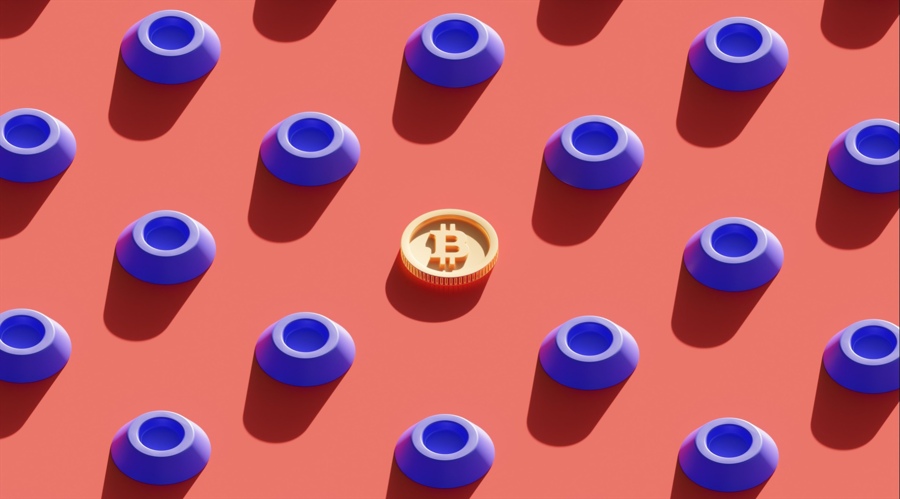
Few events have
had the same impact as the demise of Mt. Gox, the world’s largest Bitcoin
exchange. The 2014 fiasco left hundreds of investors reeling as the exchange
declared bankruptcy amid charges of theft and incompetence, culminating in the
loss of an astounding 850,000 Bitcoins.
Years later, a
complex process of restoration and reparations is begun, giving many who lost
their valuables a glimpse of optimism.
Mt. Gox’s
Rise and Fall
Mt. Gox, which
stands for “Magic: The Gathering Online Exchange,” began as a trading
network for collectible cards. However, its founder, Mark Karpeles, realized
Bitcoin’s potential and converted the exchange into a cryptocurrency trading
hub. Mt. Gox handled more than 70% of all Bitcoin transactions worldwide at its
peak.
Despite its
early success, Mt. Gox had escalating problems, including security breaches and
mismanagement charges. The most severe setback occurred in early 2014, when the
exchange revealed the loss of 850,000 Bitcoins, which were worth around $450 million
at the time. This significant loss resulted in insolvency and a later
bankruptcy petition in Japan.
Mt. Gox
Extends Deadline for Civil Rehabilitation Plan, Leaving Creditors in Limbo
Mt. Gox has
pushed back its civil rehabilitation plan deadline to March 31, 2024, from the
original October 15, 2023. This plan outlines how the remaining assets, which
now hold a substantial value in bitcoin’s surge, will be allocated to creditors
who lost funds during the exchange’s notorious hack, where around 850,000
bitcoins (approximately $450 million at the time) vanished.
The delay is
attributed to legal disputes with some creditors and the complexity of asset
allocation, with many creditors not yet agreeing to the proposed plan. While
interim payments may occur before 2024, uncertainties loom large.
Technical
difficulties emerge in the distribution of bitcoins to creditors worldwide.
Claim submissions and valid bitcoin addresses present hurdles, while some
creditors prefer cash, requiring conversions and transfers.
Bitcoin’s
volatility poses risks, as the repayment plan assumes price stability or
growth. A significant price drop could render assets insufficient to cover
claims, and mass creditor bitcoin selling might affect the market.
The Tokyo
District Court holds the final decision on asset distribution, leaving
creditors waiting for updates amid an enduring Mt. Gox saga.
Rehabilitation
Procedures
Following the
declaration of bankruptcy, Japanese authorities launched a legal procedure
known as “civil rehabilitation.” The goal of this approach was to
liquidate Mt. Gox’s remaining assets and distribute the proceeds to creditors
in a more equitable manner than typical bankruptcy processes.
The management
of Bitcoin claims is one of the key differences between civil rehabilitation
and bankruptcy. Creditors would have received their claims in Japanese Yen at
the 2014 Bitcoin price, drastically underestimating their losses owing to the
subsequent price spike. Civil rehabilitation, on the other hand, allows
creditors to receive their claims in Bitcoin, protecting the value of their
investments.
The Path to
Repayment
The road to
repayment has been riddled with legal difficulties and delays. Significant
progress, however, has been made:
The
Rehabilitation Plan has been approved.
The Tokyo
District Court accepted a restoration plan in March 2019, marking an important
milestone. This plan defined the procedure for repaying creditors and
dispersing Mt. Gox’s remaining assets.
Bitcoin
Redemption:
A significant
amount of Bitcoin owned by Mt. Gox has been retrieved as part of the
rehabilitation process. These reclaimed assets serve as the foundation for
creditor repayments.
Filing Claims:
Creditors were
compelled to submit claims in order to enforce their repayment rights.
Creditors could specify the amount of Bitcoin due to them during the claims
procedure.
Current Legal
Proceedings:
Legal processes
are still ongoing to handle lingering concerns and disputes concerning creditor
claims and asset distribution.
Repayments to
Creditors
The payback
procedure consists of several steps:
Report of the
Trustees:
The
court-appointed trustee for Mt. Gox’s bankruptcy estate, Nobuaki Kobayashi,
produced a series of papers documenting the rehabilitation process, the status
of creditor claims, and the estimated worth of assets.
Distribution on
a pro rata basis:
Pro rata
distribution is a critical component in the payback process. This means that
depending on the total assets available for distribution, all accepted creditor
claims will get the same percentage of their approved claim amount.
Claim
Evaluation:
The trustee
evaluates and analyzes creditor claims in consultation with legal and financial
professionals. This procedure ensures that legitimate claims are recognized and
creditors are fairly addressed.
Distribution of
Bitcoin:
Creditors who
made successful claims will be paid a portion of the seized Bitcoin assets. The
payout will be made in Bitcoin, ensuring that the value is preserved at the
moment of distribution.
Controversies
and Obstacles
The
reimbursement process for Mt. Gox has not been without its difficulties and
disputes. Some critical issues are as follows:
Claims in
Controversy:
Some creditors
have challenged the assessed worth of their claims, resulting in legal battles
and delays in the distribution process.
Timing:
The procedure
has taken longer than expected, causing dissatisfaction among creditors who
have been waiting to retrieve their assets for years.
Market
Influence:
The
distribution of a large number of Bitcoin could have an influence on
cryptocurrency markets, raising concerns about price volatility.
Implications
for Taxation:
Creditors may
incur tax consequences depending on when and where they distribute their
Bitcoin. These tax considerations differ depending on the jurisdiction.
The Mt. Gox
Future
The bitcoin
community is keeping a close eye on the payback procedure. The end of Mt. Gox’s
civil rehabilitation will be a watershed moment in the history of
cryptocurrency exchanges and investor safety.
While there is
some hope that assets will be returned to creditors, many questions remain.
What impact would the distribution of a significant number of Bitcoin have on
the broader cryptocurrency market? What can be drawn from the Mt. Gox saga to
avoid such incidents in the future? These inquiries highlight the importance of
strong security safeguards, transparency, and regulatory supervision in the bitcoin
business.
As the legal
proceedings continue, Mt. Gox creditors remain optimistic about resolving this
long-standing dispute. The Mt. Gox saga should serve as a wake-up call to both
investors and cryptocurrency exchange operators, emphasizing the significance
of trust, security, and accountability in the fast evolving world of digital
assets.
Lessons
Discovered
The Mt. Gox
debacle teaches the bitcoin sector numerous lessons:
- Security is
critical: To secure user
dollars and data, exchange operators must emphasize strong security measures. - Oversight and
Regulation: Regulatory
frameworks and control are critical for protecting investor interests and
preserving market integrity. - Transparency: Transparent
communication with users is crucial for retaining confidence, especially during
times of crisis. - Legal
Proceedings: Civil
rehabilitation, for example, can give a fair and equitable way of settling
complex financial concerns. - Caution to
Investors: When selecting
bitcoin exchanges and platforms, investors should use caution and due research.
The outcome of
Mt. Gox’s civil rehabilitation will define the future of bitcoin creditor
repayments. It demonstrates the cryptocurrency community’s tenacity, as it
continues to evolve and adapt in the face of challenges and uncertainties.
Few events have
had the same impact as the demise of Mt. Gox, the world’s largest Bitcoin
exchange. The 2014 fiasco left hundreds of investors reeling as the exchange
declared bankruptcy amid charges of theft and incompetence, culminating in the
loss of an astounding 850,000 Bitcoins.
Years later, a
complex process of restoration and reparations is begun, giving many who lost
their valuables a glimpse of optimism.
Mt. Gox’s
Rise and Fall
Mt. Gox, which
stands for “Magic: The Gathering Online Exchange,” began as a trading
network for collectible cards. However, its founder, Mark Karpeles, realized
Bitcoin’s potential and converted the exchange into a cryptocurrency trading
hub. Mt. Gox handled more than 70% of all Bitcoin transactions worldwide at its
peak.
Despite its
early success, Mt. Gox had escalating problems, including security breaches and
mismanagement charges. The most severe setback occurred in early 2014, when the
exchange revealed the loss of 850,000 Bitcoins, which were worth around $450 million
at the time. This significant loss resulted in insolvency and a later
bankruptcy petition in Japan.
Mt. Gox
Extends Deadline for Civil Rehabilitation Plan, Leaving Creditors in Limbo
Mt. Gox has
pushed back its civil rehabilitation plan deadline to March 31, 2024, from the
original October 15, 2023. This plan outlines how the remaining assets, which
now hold a substantial value in bitcoin’s surge, will be allocated to creditors
who lost funds during the exchange’s notorious hack, where around 850,000
bitcoins (approximately $450 million at the time) vanished.
The delay is
attributed to legal disputes with some creditors and the complexity of asset
allocation, with many creditors not yet agreeing to the proposed plan. While
interim payments may occur before 2024, uncertainties loom large.
Technical
difficulties emerge in the distribution of bitcoins to creditors worldwide.
Claim submissions and valid bitcoin addresses present hurdles, while some
creditors prefer cash, requiring conversions and transfers.
Bitcoin’s
volatility poses risks, as the repayment plan assumes price stability or
growth. A significant price drop could render assets insufficient to cover
claims, and mass creditor bitcoin selling might affect the market.
The Tokyo
District Court holds the final decision on asset distribution, leaving
creditors waiting for updates amid an enduring Mt. Gox saga.
Rehabilitation
Procedures
Following the
declaration of bankruptcy, Japanese authorities launched a legal procedure
known as “civil rehabilitation.” The goal of this approach was to
liquidate Mt. Gox’s remaining assets and distribute the proceeds to creditors
in a more equitable manner than typical bankruptcy processes.
The management
of Bitcoin claims is one of the key differences between civil rehabilitation
and bankruptcy. Creditors would have received their claims in Japanese Yen at
the 2014 Bitcoin price, drastically underestimating their losses owing to the
subsequent price spike. Civil rehabilitation, on the other hand, allows
creditors to receive their claims in Bitcoin, protecting the value of their
investments.
The Path to
Repayment
The road to
repayment has been riddled with legal difficulties and delays. Significant
progress, however, has been made:
The
Rehabilitation Plan has been approved.
The Tokyo
District Court accepted a restoration plan in March 2019, marking an important
milestone. This plan defined the procedure for repaying creditors and
dispersing Mt. Gox’s remaining assets.
Bitcoin
Redemption:
A significant
amount of Bitcoin owned by Mt. Gox has been retrieved as part of the
rehabilitation process. These reclaimed assets serve as the foundation for
creditor repayments.
Filing Claims:
Creditors were
compelled to submit claims in order to enforce their repayment rights.
Creditors could specify the amount of Bitcoin due to them during the claims
procedure.
Current Legal
Proceedings:
Legal processes
are still ongoing to handle lingering concerns and disputes concerning creditor
claims and asset distribution.
Repayments to
Creditors
The payback
procedure consists of several steps:
Report of the
Trustees:
The
court-appointed trustee for Mt. Gox’s bankruptcy estate, Nobuaki Kobayashi,
produced a series of papers documenting the rehabilitation process, the status
of creditor claims, and the estimated worth of assets.
Distribution on
a pro rata basis:
Pro rata
distribution is a critical component in the payback process. This means that
depending on the total assets available for distribution, all accepted creditor
claims will get the same percentage of their approved claim amount.
Claim
Evaluation:
The trustee
evaluates and analyzes creditor claims in consultation with legal and financial
professionals. This procedure ensures that legitimate claims are recognized and
creditors are fairly addressed.
Distribution of
Bitcoin:
Creditors who
made successful claims will be paid a portion of the seized Bitcoin assets. The
payout will be made in Bitcoin, ensuring that the value is preserved at the
moment of distribution.
Controversies
and Obstacles
The
reimbursement process for Mt. Gox has not been without its difficulties and
disputes. Some critical issues are as follows:
Claims in
Controversy:
Some creditors
have challenged the assessed worth of their claims, resulting in legal battles
and delays in the distribution process.
Timing:
The procedure
has taken longer than expected, causing dissatisfaction among creditors who
have been waiting to retrieve their assets for years.
Market
Influence:
The
distribution of a large number of Bitcoin could have an influence on
cryptocurrency markets, raising concerns about price volatility.
Implications
for Taxation:
Creditors may
incur tax consequences depending on when and where they distribute their
Bitcoin. These tax considerations differ depending on the jurisdiction.
The Mt. Gox
Future
The bitcoin
community is keeping a close eye on the payback procedure. The end of Mt. Gox’s
civil rehabilitation will be a watershed moment in the history of
cryptocurrency exchanges and investor safety.
While there is
some hope that assets will be returned to creditors, many questions remain.
What impact would the distribution of a significant number of Bitcoin have on
the broader cryptocurrency market? What can be drawn from the Mt. Gox saga to
avoid such incidents in the future? These inquiries highlight the importance of
strong security safeguards, transparency, and regulatory supervision in the bitcoin
business.
As the legal
proceedings continue, Mt. Gox creditors remain optimistic about resolving this
long-standing dispute. The Mt. Gox saga should serve as a wake-up call to both
investors and cryptocurrency exchange operators, emphasizing the significance
of trust, security, and accountability in the fast evolving world of digital
assets.
Lessons
Discovered
The Mt. Gox
debacle teaches the bitcoin sector numerous lessons:
- Security is
critical: To secure user
dollars and data, exchange operators must emphasize strong security measures. - Oversight and
Regulation: Regulatory
frameworks and control are critical for protecting investor interests and
preserving market integrity. - Transparency: Transparent
communication with users is crucial for retaining confidence, especially during
times of crisis. - Legal
Proceedings: Civil
rehabilitation, for example, can give a fair and equitable way of settling
complex financial concerns. - Caution to
Investors: When selecting
bitcoin exchanges and platforms, investors should use caution and due research.
The outcome of
Mt. Gox’s civil rehabilitation will define the future of bitcoin creditor
repayments. It demonstrates the cryptocurrency community’s tenacity, as it
continues to evolve and adapt in the face of challenges and uncertainties.
- SEO Powered Content & PR Distribution. Get Amplified Today.
- PlatoData.Network Vertical Generative Ai. Empower Yourself. Access Here.
- PlatoAiStream. Web3 Intelligence. Knowledge Amplified. Access Here.
- PlatoESG. Carbon, CleanTech, Energy, Environment, Solar, Waste Management. Access Here.
- PlatoHealth. Biotech and Clinical Trials Intelligence. Access Here.
- Source: https://www.financemagnates.com//cryptocurrency/everything-you-need-to-know-about-mt-gox-repayments/
- :has
- :is
- :not
- :where
- 000
- 15%
- 2014
- 2019
- 2023
- 2024
- 31
- a
- About
- accepted
- accountability
- adapt
- addressed
- addresses
- affect
- agreeing
- All
- allocated
- allocation
- allows
- Amid
- among
- amount
- an
- analyzes
- and
- approach
- approved
- approximately
- ARE
- around
- AS
- assessed
- asset
- Assets
- assumes
- At
- Authorities
- available
- avoid
- back
- Bankruptcy
- banner
- basis
- battles
- BE
- been
- before
- began
- begun
- between
- Bitcoin
- Bitcoin Exchanges
- Bitcoin Price
- bitcoin transactions
- Bitcoins
- both
- breaches
- broader
- business
- by
- call
- CAN
- Cards
- Cash
- causing
- caution
- challenged
- challenges
- charges
- civil
- claim
- claims
- Close
- Collectible
- Communication
- community
- compelled
- complex
- complexity
- component
- concerning
- Concerns
- confidence
- Consequences
- considerations
- consists
- consultation
- continue
- continues
- control
- controversy
- conversions
- converted
- could
- Court
- cover
- creditor
- creditors
- crisis
- critical
- crucial
- cryptocurrency
- Cryptocurrency Exchange
- Cryptocurrency Exchanges
- cryptocurrency market
- cryptocurrency markets
- cryptocurrency trading
- culminating
- data
- deadline
- decision
- define
- defined
- delay
- delays
- demonstrates
- Depending
- differ
- differences
- difficulties
- digital
- Dispute
- disputes
- distribute
- distribution
- district
- district court
- documenting
- dollars
- drastically
- drawn
- Drop
- due
- during
- Early
- emerge
- emphasize
- emphasizing
- end
- enduring
- enforce
- ensures
- ensuring
- equitable
- especially
- estate
- estimated
- Ether (ETH)
- evaluation
- events
- everything
- evolve
- evolving
- example
- exchange
- Exchanges
- expected
- extends
- eye
- Face
- fair
- fairly
- FAST
- final
- financial
- follows
- For
- Foundation
- founder
- frameworks
- from
- funds
- future
- future of Bitcoin
- gathering
- get
- Give
- Giving
- Glimpse
- goal
- Gox
- Growth
- hack
- had
- hand
- handle
- Have
- Highlight
- history
- hold
- holds
- hope
- How
- However
- HTTPS
- Hub
- Hundreds
- Hurdles
- Impact
- importance
- important
- in
- Including
- incompetence
- influence
- Inquiries
- INSOLVENCY
- integrity
- interests
- interim
- into
- Investments
- investor
- Investors
- issues
- IT
- ITS
- Japan
- Japanese
- Japanese Yen
- jpg
- jurisdiction
- keeping
- Key
- Know
- known
- large
- largest
- later
- launched
- leaving
- left
- Legal
- legitimate
- Lessons
- liquidate
- long-standing
- longer
- loom
- loss
- losses
- lost
- Lost Funds
- made
- made successful
- magic
- management
- manner
- many
- March
- mark
- Market
- Markets
- marking
- Mass
- May..
- means
- measures
- might
- milestone
- million
- moment
- more
- most
- MT
- Mt. Gox
- must
- Need
- network
- Nobuaki Kobayashi
- notorious
- now
- number
- numerous
- occur
- occurred
- october
- of
- on
- ONE
- ongoing
- online
- operators
- Optimism
- Optimistic
- or
- order
- original
- Other
- Outcome
- outlines
- owned
- paid
- papers
- part
- path
- PAYBACK
- payments
- Peak
- percentage
- plan
- Platforms
- plato
- Plato Data Intelligence
- PlatoData
- poses
- potential
- prefer
- present
- preserving
- price
- Pro
- problems
- procedure
- Proceedings
- proceeds
- process
- processes
- Produced
- professionals
- Progress
- proposed
- protecting
- pushed
- Questions
- raising
- realized
- receive
- received
- recognized
- redemption
- Regulation
- regulatory
- rehabilitation
- reimbursement
- remain
- remaining
- repayment
- repayments
- research
- resolving
- restoration
- resulted
- resulting
- retaining
- Revealed
- rights
- Rise
- risks
- road
- s
- safeguards
- Safety
- saga
- same
- sector
- secure
- security
- security breaches
- Security Measures
- seized
- Seized bitcoin
- selecting
- Selling
- Series
- serve
- settling
- several
- severe
- should
- significance
- significant
- some
- spike
- Stability
- stands
- Status
- Steps
- Still
- strong
- Submissions
- submit
- subsequent
- substantial
- success
- successful
- such
- supervision
- surge
- taken
- tax
- Taxation
- than
- that
- The
- The Future
- the world
- theft
- their
- Them
- There.
- These
- they
- this
- time
- times
- to
- tokyo
- Total
- Trading
- Transactions
- transfers
- Transparency
- transparent
- Trust
- Trustee
- typical
- uncertainties
- Updates
- use
- User
- users
- value
- Volatility
- Waiting
- was
- Way..
- were
- What
- when
- which
- while
- WHO
- will
- with
- without
- world
- worldwide
- worth
- would
- years
- Yen
- yet
- you
- zephyrnet






